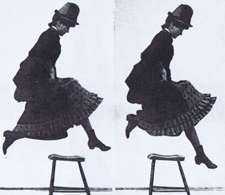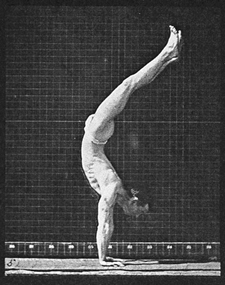Jonathan Finn is Chair of the Department of Communication Studies at Wilfrid Laurier University. He is the author of Capturing the Criminal Image: From Mug Shot to Surveillance Society (Minnesota 2009) and Visual Communication and Culture: Images in Action (Oxford 2012) as well as numerous essays on photography, surveillance, and visual communication. His current work addresses the use of the photograph as a juridical tool in sport.

Authors | Jonathan Finn
Articles on Amodern by Jonathan Finn
LOOKING INTO THE PAST
An Interview with Ludmilla Jordanova
Ludmilla Jordanova is Professor of History and Visual Culture at Durham University. She is the author of numerous books and essays including The Look of the Past: Visual and Material Evidence in Historical Practice (Cambridge 2012), History in Practice (Bloomsbury 2000, 2006) and Sexual Visions: Images of Gender, Science and Medicine between the Eighteenth and Twentieth Centuries (University of Wisconsin 1989). She is a Fellow of the Royal Historical Society and the Royal Society of Medicine. She was a Trustee of the National Portrait Gallery in London from 2001-2009 and is currently a Trustee of the Science Museum Group. She is currently working on the 3rd edition of History in Practice.
AMODERN 3: SPORT AND VISUAL CULTURE
Much of our knowledge of and experience with sport comes to us in mediated form. Newspapers, television broadcasts, film, sports magazines and other sports-related media present us with an unceasing flow of visual, textual and oral information related to sport. The ubiquity of cell phone cameras and user-driven devices like GPS watches and Go-Pro cameras enable athletes and fans alike to produce, disseminate and analyze their own sports content. The result is a seemingly limitless flow of sport media on everything from Tim-Bits hockey to the FIFA World Cup.
Within the aggregate field of mediated sport, this special issue of Amodern is concerned with the visual, and more specifically with the image. Sports and images intersect in myriad ways: images are used as pedagogical tools in sport as they are produced, circulated and read by coaches, athletes, trainers and sports medicine professionals; they are used as juridical tools that either replace or augment the human eye in sporting events; they serve commercial purposes as in television and print advertising; they are used as entertainment in television, film and on-line; and they form an essential part of visual culture as they are manifest in visual art, pop culture and other forms of visual culture production. Importantly, whether pedagogical, juridical, commercial, aesthetic or otherwise, images of sport are constituent components of culture: they are bound to cultural conceptions of class, race, nation and gender and are enmeshed in the fundamental economic and institutional infrastructures of society.





